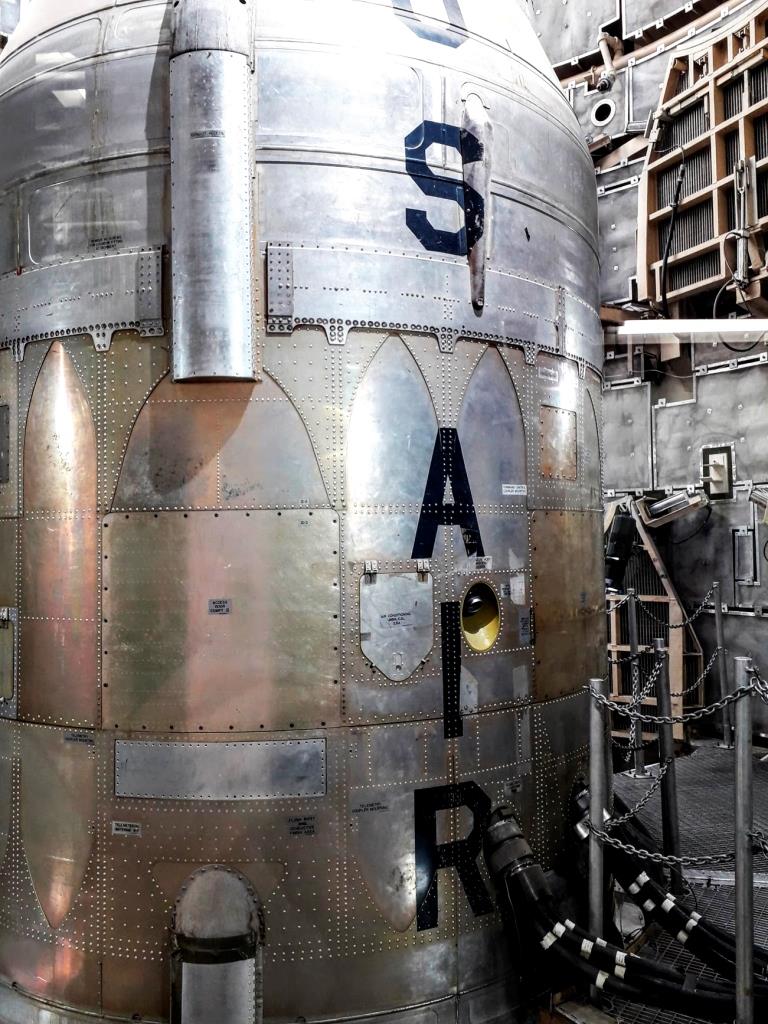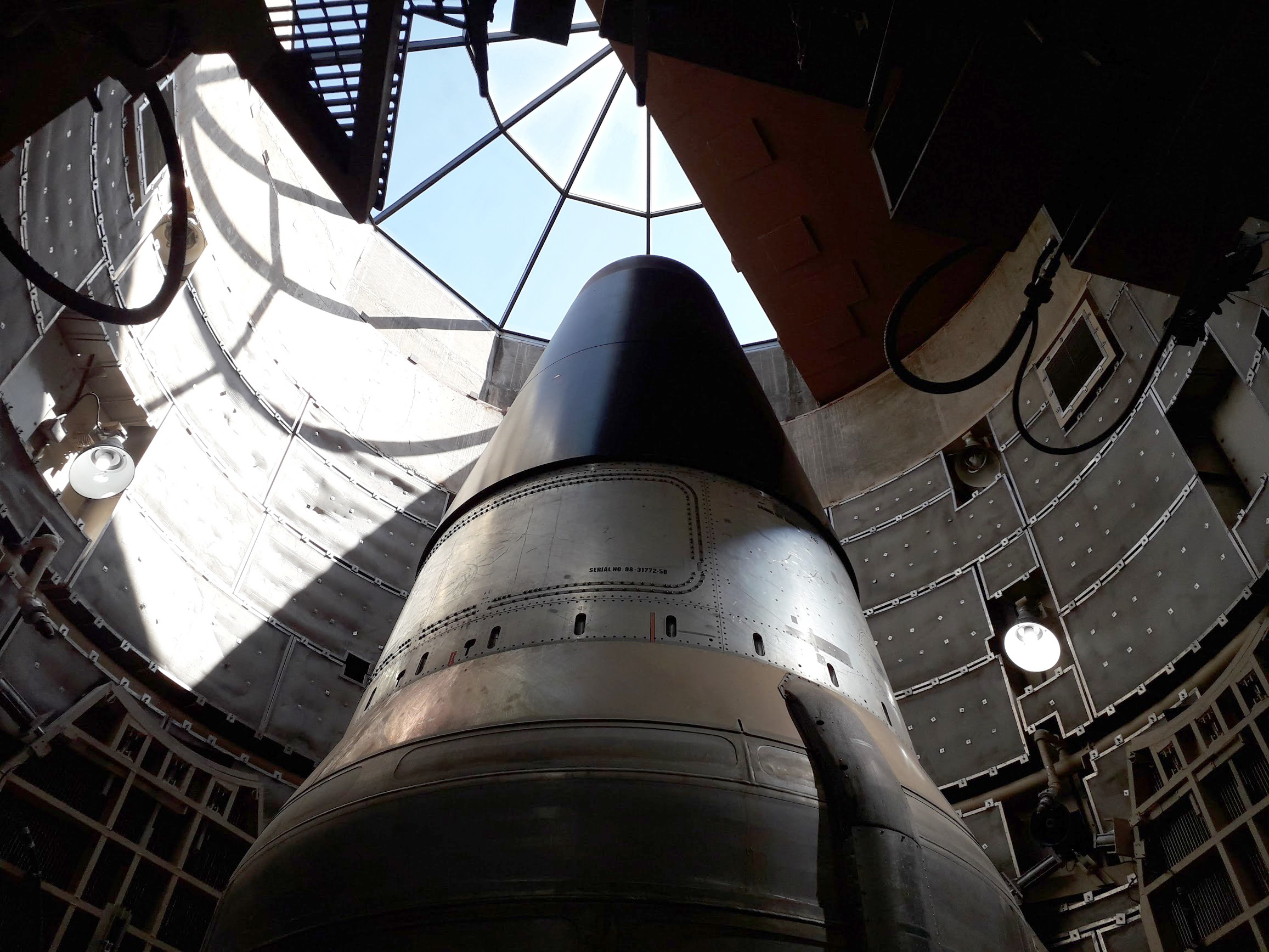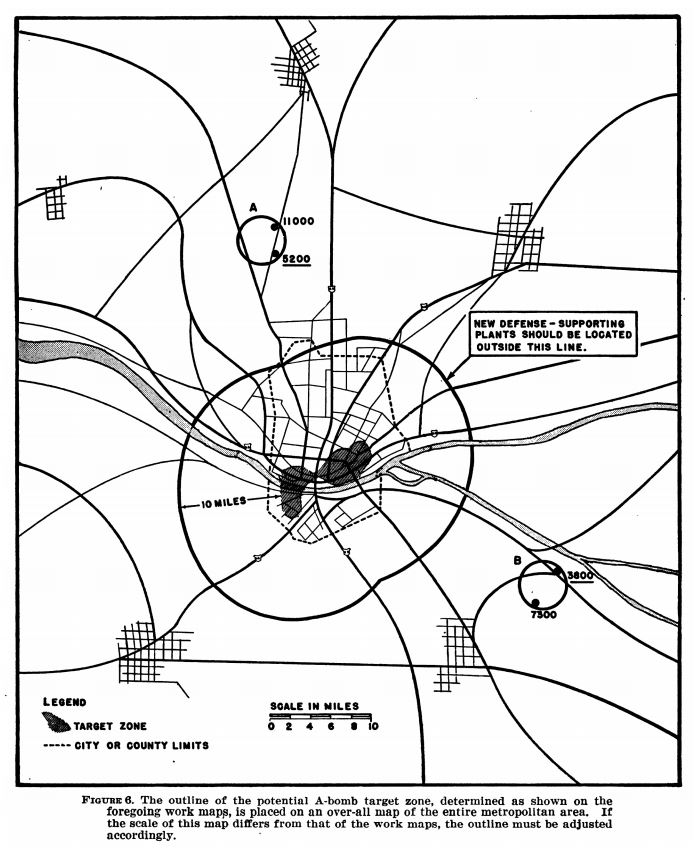

Fiona Amundsen and Tim Corballis, Production Still (Arcosanti), *Human Hand*, 2019-20
In 2019, we filmed, wrote and talked to people in three places in the state of Arizona, United States of America. The first, Arcosanti, is an experiment in high-density living, built since the 1970s by a community centred around architect Paolo Soleri (1919–2013). It was intended as a carless city of 5,000 and although it has never housed even a tenth of that number, it has persisted as a centre for craft, community, education and events.
The second place was Biosphere 2, a linked series of steel and glass structures that housed a notorious ‘closed system’ experiment in the early 1990s. For two years it was sealed off from the outside world, leaving eight people inside to occupy and maintain five ecosystems, and contend with falling oxygen levels and species loss. The last place we visited was the Titan II Missile Museum, a former Titan II nuclear ballistic missile base. Almost entirely underground, the base contains a control centre and living quarters separated by a long cableway from the silo and the missile itself.
In each site we encountered a self-contained and separate world. Each, too, seemed to concentrate the forces and energies of the wider postwar West. The promises and problems associated with suburban culture and freeways, with technical control of the world and its environments, with militarisation and nuclear deterrence—all these were palpable, to different degrees, in our sites. We felt there was something that brought these places together, however much they also seemed as different from one another as could be imagined.
Writing about the very ordinary fact that people take care of one another, philosopher Sandra Laugier ends up saying something remarkable: that by caring, people are ‘attentive to the functioning of the world’. It is remarkable because it suggests a short circuit between ‘small’ acts of care and the world writ large. It suggested to us that by paying heed to small acts of human care, we might gain a different, closer sense of the system of freeways, bombs and control that was and is the Western world. By visiting Arcosanti, Biosphere 2 and the Titan Missile Museum, we wanted to do more than just analyse the histories, players, ideas and economies that drove them. Each site was a world separate from the world and a mirror of it, and when we visited them we wanted to listen for small, everyday acts, to see if we could hear how worlds were made. It meant trying to hear and see, in each place, how the wider milieu might be felt in, or against, the acts and imprints of the human hand.
At Arcosanti, we spoke with Sue Kirsch, who had come to Arcosanti in the early days to help out, initially in the kitchen, and had stayed for much of her life since. Sue is now the archivist at Arcosanti, and lives in the apartment next to the one we rented for a week. We talked to Sue a number of times as she walked past, and recorded two of our discussions with her.
At the Titan Missile Museum we met Yvonne Morris, a former launch officer who is now director of the museum. We had been in touch with Yvonne prior to our visit, and after spending time underground in the control centre and silo we recorded one long discussion with her. During the brief time we spent with them, we felt, each in a different way, a close connection with Sue and Yvonne. It gives us great pleasure to have their voices as part of the video works Social Bodies and Command Performance. Visiting these places as outsiders, listening to Sue and Yvonne, we hoped to put into practice our own attitude of care—an attitude of sensitivity and listening embodied in the camera, the sound recorder and the written word. We acknowledge that cameras and recording equipment have so often been used to discipline and surveil, but we felt they could also be used ethically, to listen. Part of this was the feeling that there is more in the recorded voice than just words, just as there is far more in the photograph than just evidence.
More voices feature in Human Hand. The first is that of veteran activist Joanna Macy. Joanna’s voice opens each of the video works, reading a text written by us. Her thought is central to what we do. She is important for an ethical stance that acknowledges the injustices and entanglements of the world, while asking us to act as caring guardians even for its darkest aspects. Our title, Human Hand, is drawn from a transcript of a guided bodily meditation in her book Coming Back to Life (1998).
The text we asked Joanna to read concerned a minor post-war historical sequence that seemed to touch on our three sites: the planned suburban expansion of American cities, formulated as a deliberate response to the threat of a nuclear attack at their centres. This was only one factor influencing the shape of cities in the United States, but it encapsulated something of the nature of the post-war world. It was suggestive of the links between militarisation and suburban life, of the entangled needs for shelter, control and escape—all forms, perhaps, of caring—in the age of global scale technologies.
We did not interview at Biosphere 2—instead, we asked poet, essayist and academic Ingrid Horrocks to read a written voiceover response to the space. The text read by Ingrid, and the texts that appear on screen in Social Bodies and Command Performance, offer something of our own reflections and responses to the sites, the interviews and the archival material that we have developed. The diverse voices and words, the moving and still images in Human Hand come together in an act of listening and response, hoping for clues to how to live with care in our world.

